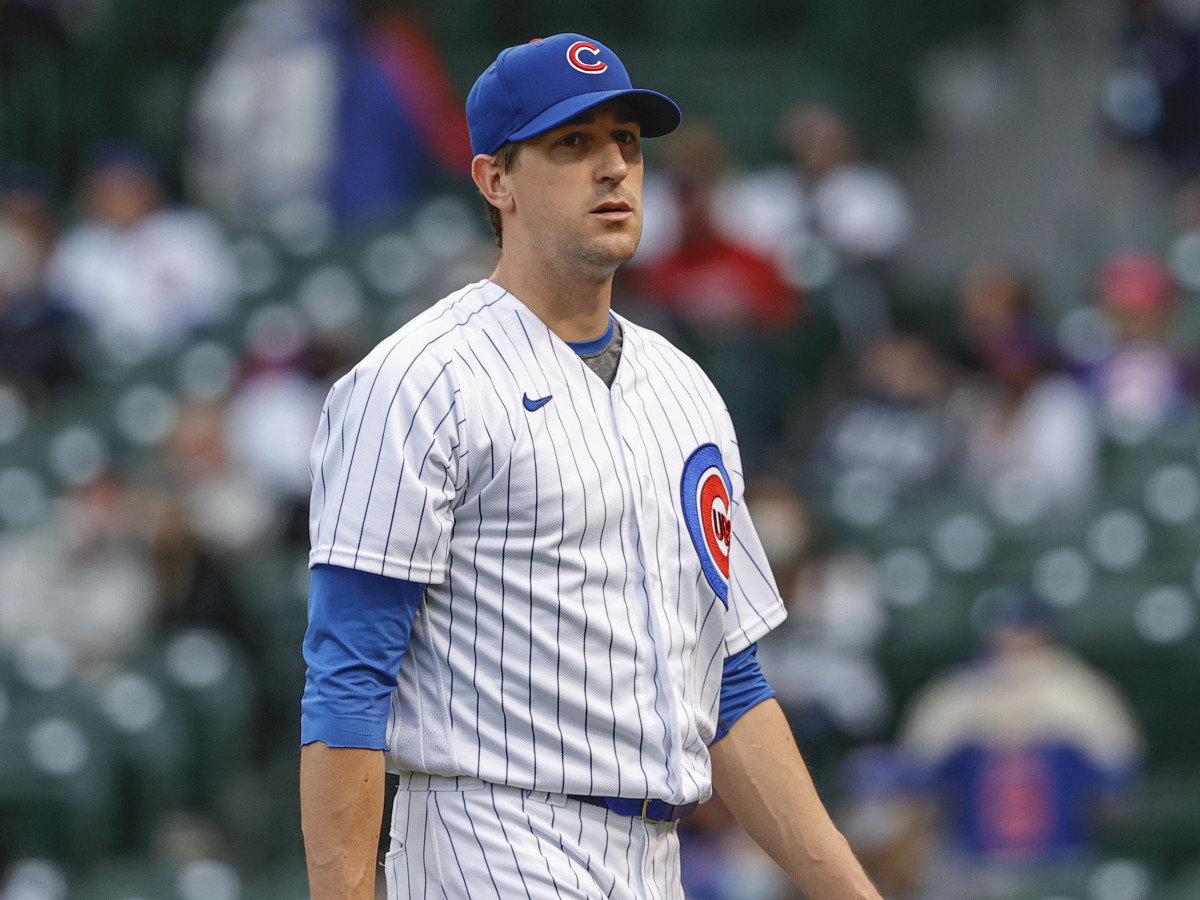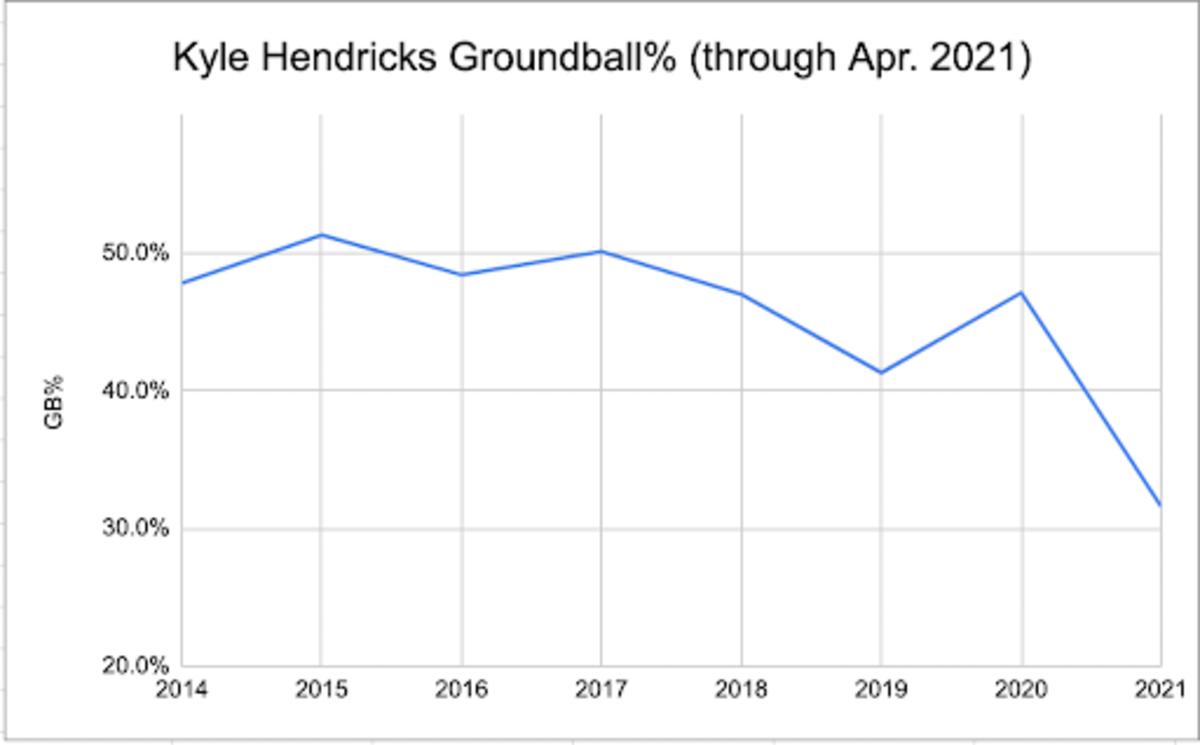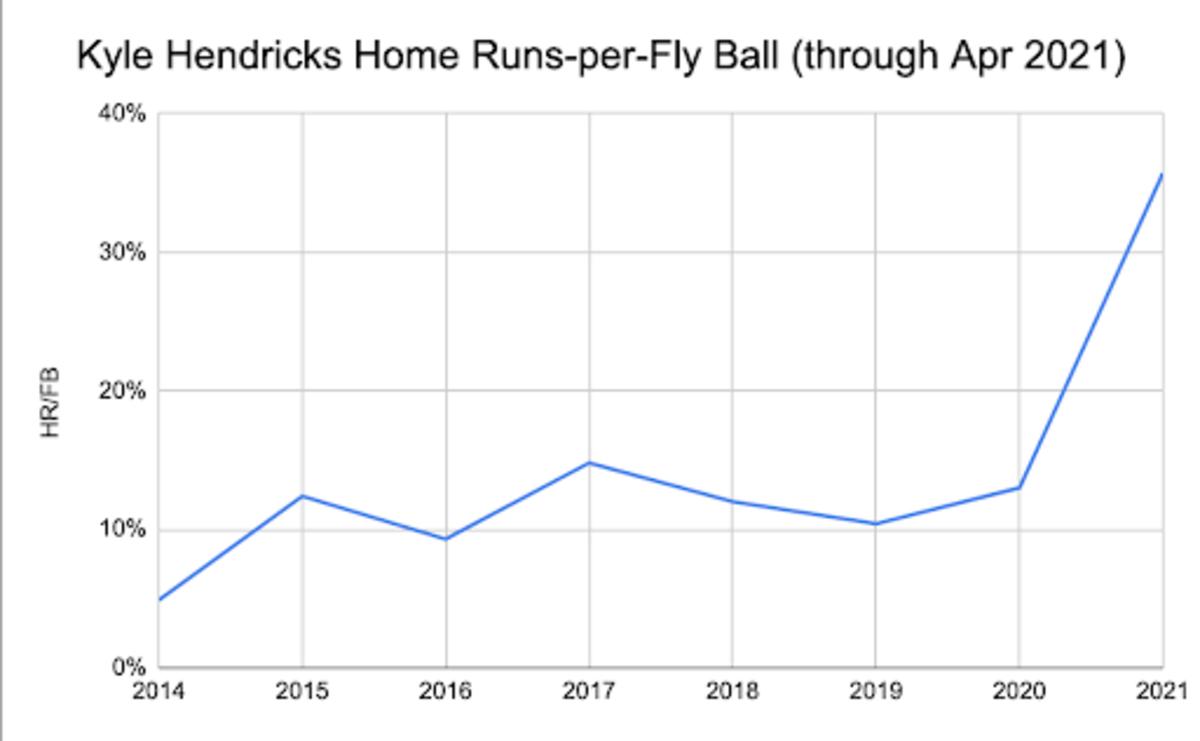What Did Kyle Hendricks Do to Deserve This?
Welcome to The Opener, where every weekday morning you’ll get a fresh, topical column to start your day from one of SI.com’s MLB writers.
In the first inning of Sunday’s game between the Cubs and Pirates, Chicago broadcaster Jim Deshaies was left with a question: “Kyle Hendricks, what did you do to deserve this, young man?”
It referred to the fact that the pitcher had watched a soft-contact parade—a series of flares, bloops and dribblers—turn into hits that turned into runs. But it may as well have referred to his season as a whole. The 31-year-old, whose career had previously been marked by its consistency, has begun this season with a frustrating mix of bad luck and bad performance that makes the question seem fitting: What did you do to deserve this?

His start on Sunday felt somewhat like a continuation of the theme. It was far heavier on the bad luck than on the bad performance, but it was plenty frustrating, and the Cubs lost 6-5. But it also offered some reasons for hope—just as his prior start, his best of the year, had earlier in the week. So what’s going right here? First, it’s necessary to look at what’s been going wrong.
Hendricks’s playbook has traditionally been pretty simple: He relies on generating soft contact and keeping the ball on the ground. That’s what has allowed him to thrive despite his lack of velocity; the sinkerballer doesn’t rack up a lot of strikeouts, because he doesn’t need to, getting results by producing plenty of groundouts instead. And through his first five starts this year, he wasn’t doing that, at all:

That’s bad! There was no obvious adjustment in his pitch mix to suggest this sort of change; Hendricks has still been relying primarily on his sinker, followed by his changeup and his four-seamer, without any other dramatic differences. He was still trying to be the same sinker-first, groundball-heavy pitcher that he had always been, in other words. He just wasn’t succeeding. And the picture looked even worse when you considered what was happening to those balls that were no longer staying on the ground.
Hendricks’s flyball rate had actually increased only modestly; the difference in his groundball percentage was split between flies and line drives. But a lot of those fly balls turned into home runs—giving him the worst home-run rate in the league.

A pitcher has some degree of control over what type of contact he generates—how many grounders or fly balls he produces. He does not have nearly as much control over what happens next—whether his fly balls became home runs. If the first of these two graphs suggests that something was wrong with Hendricks, the second suggests just bad fortune. A pitcher’s HR/FB% is often used as a proxy for his luck, or lack thereof, for a reason: It’s a number that a pitcher can’t do much to affect. And so these two concepts played together here—Hendricks did not look like himself and was not exactly putting himself in a position to succeed, but his missteps looked much worse than they had to, exacerbated by simple bad luck.
Which brings us to his two most recent starts and the positive changes therein. Against the Dodgers on Tuesday, in the first game of a doubleheader, Hendricks went all seven innings and allowed just one run. The most crucial difference between this start and his earlier ones? More than 50% of his balls in play stayed on the ground this time. That trend continued on Sunday with a groundball rate of 47.8%—back-to-back games in which he’d managed to keep the ball on the ground more or less exactly as much as he typically had in previous seasons.
But while this had paid off for Hendricks on Tuesday, it did not on Sunday, when his ability to keep the ball on the ground was met with its own form of bad luck. All his soft contact was for naught—balls kept dropping, tapping, and squibbing their way into hits. Two grounders were the subject of errors from the fielders behind him. He finished his five innings with six runs allowed, four of them earned, on nine hits.
That’s not what you’d call an encouraging stat line, exactly. But it’s more positive than it might seem at a glance—a step in the right direction in terms of process, at least, if not in terms of outcome. For a pitcher who had an ERA below 3.50 for each of the last five seasons, here’s an indication that while he might not get it quite that low for a sixth one, he’s probably still bound to lower it from his current 6.27.
As for the question of what Hendricks did to deserve this, the answer is complicated. But he’s apparently working to make sure it’s changing.
Quick Hits
- Jacob deGrom was pulled after the fifth inning of a characteristically standout start as a precaution after displaying tightness in his right side—the same issue that led to him being scratched before a start earlier this week. It’s certainly concerning for the Mets, but on the bright side, their offense seems to have (finally) woken up. Credit Donnie Stevenson, the ra(t)coon, the new hitting coaches, or all of the above.
- The Dodgers lost to the Angels, 2-1, to mark their fifth consecutive series loss—tied for their worst stretch over the last decade. With the offense slumping and the pitching staff hit by injuries, it’s been a rough few weeks, and perhaps the harshest possible way to silence those “best team ever?” questions from early April.
- Please enjoy this delightful swing from Tim Anderson:
when your dad yanks the piñata all the way up pic.twitter.com/kOHHnpWoSj
— Cut4 (@Cut4) May 9, 2021
More MLB coverage:
